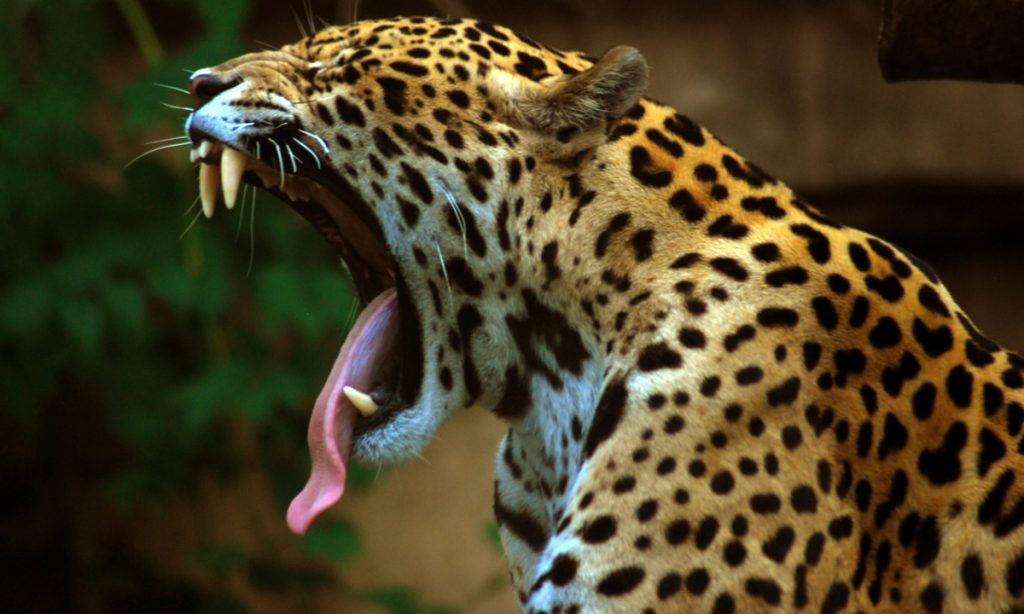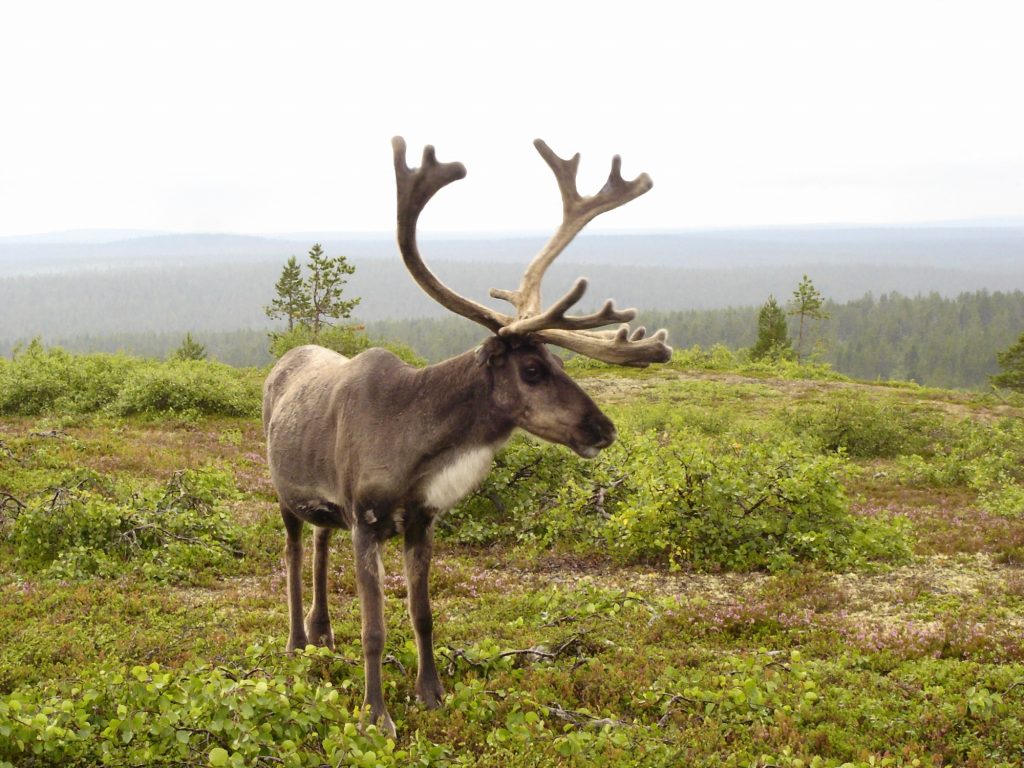
For humans, the allure of experimenting with intense, mind-altering substances is probably as old as our species. While certain drugs have had varying levels of legality and taboo status in some cultures, it’s hard to deny that our proclivity for taking our brains on a brief sojourn above the stratosphere is an old part of who we are.
But don’t mistake this activity as biologically unique. We are definitely not the only animals on the block to indulge here and there. Other species habitually find themselves purposefully intoxicated in the wild more than you might think. Many go straight for the weirdest stuff on the shelf — powerful hallucinogens found in plants and fungi.
Jaguars on yagé
Jaguars are the largest cats in the Americas and are apex predators that range from far southern Arizona through Central America and the warmer regions of South America. They are a force to be reckoned with in any habitat they encounter—a cunning, rippling brick of muscle, teeth, and claws. But from time to time, the imposing creature will munch on the leaves of the yagé vine (Banisteriopsis caapi), which grows throughout the Amazon Rainforest, and promptly turn into a big, goofy, intoxicated kitten, as this clip from BBC’s “Weird Nature” illustrates.
The vine is a major component of the potent psychoactive drink known as ayahuasca, which is used by indigenous peoples throughout the Amazon as a traditional spiritual medicine. It’s unclear what the exact effect is on the jaguar’s brain (though judging by the video, it’s profound enough to make the cat wriggle on its back and stare intently at the canopy).
Ayahuasca is known for containing the hallucinogen DMT, but that ingredient doesn’t come from yagé; instead, the compounds in the vine (harmala alkaloids) make the DMT from another ingredient in the drink orally active. So, the jaguar is likely experiencing something intense from harmala alkaloids, but it’s probably not comparable to the DMT effects of the full ayahuasca cocktail.
Scientists aren’t sure why jaguars drug themselves like this, but the people they’ve shared the rainforest with for thousands of years think the effects of the vine improve the cats’ hunting skills.
Mushroom-eating reindeer
Fly agaric mushrooms (Amanita muscaria) come from a notorious family of fungi — they are closely related to deadly poisonous varieties like the destroying angel and death cap. But while fly agarics have their own suite of noxious toxins, none are nearly as harmful as the deadly amatoxins of other agarics. The mushrooms also contain muscimol, a compound that produces a sedative and hallucinogenic effect in mammals. Users often report a dream-like experience, along with synesthesia—the blending and cross-wiring of senses.

Reindeer in northern Eurasia discovered this long ago — and they make a habit of hoovering up the red and white-flecked mushrooms like a bunch of antlered Super Marios. They don’t seem to be bothered much by the nastier toxins in the fungi, bounding and bouncing around with glee as the muscimol hits their system.
Muscimol that is passed through the body isn’t degraded, while all the unsavory compounds are broken down by the body. This means that the urine of someone who has eaten the mushroom is, well, reusable. In fact, the Sami people of northern Finland and far northwestern Russia collected and drank the urine of intoxicated folks to stretch out the use of the mushrooms’ hallucinogenic properties—but without the ill effects on the second go-around.

The Sami did the same thing with the pee of reindeer that had eaten the mushrooms. Essentially, the reindeer were used as a filter, with more purified muscimol coming out in their urine. Somewhere along the line, the reindeer learned that they could get high off of the urine of human users as well, so they would eat snow and lick areas where intoxicated humans had peed, thus recycling the muscimol yet again.
Primates that take PEDs
Iboga (Tabernanthe iboga) is a shrub found in the tropical rainforests of Central Africa. It contains ibogaine, a psychoactive compound that is most concentrated in the bark and roots. Many different types of native wildlife are known to eat the plant, but there are accounts of one species in particular that appears to use it for a premeditated, intentional purpose.

Mandrills—colorful, close relatives of baboons—in Gabon and the Congo are thought to use the root as a performance-enhancing drug in dominance conflicts.
In his book “Animals and Psychedelics,” ethnobotanist Giorgio Samorini describes a conversation with a Mitsogho shaman in Gabon about how male mandrills, which occasionally compete for dominance in their giant, roving bands, use the iboga root to hype themselves up. The primates reportedly seek out iboga, tear it out of the ground, and eat the roots. They then wait for a couple hours for the ibogaine to kick in and then go off to battle.
It’s unclear what benefits the hallucinogen could have on the battle, but it’s possible that some kind of pain-killing effect is also present.
Tentatively tripping
The examples above are only a small sampling of the potential uses of hallucinogens by animals, and there are others where it’s not quite as clear what the animals are experiencing. For example, it’s often cited that bighorn sheep seek hard-to-reach psychedelic lichen that they scrape off of rocks in the Canadian Rockies, but records of the animals’ behavior and the identity of the trip-inducing lichen are lacking, so it’s hard to be sure this particular “Rocky Mountain high” exists at all.
There are also various monkeys and lemurs that appear to rub toxic millipedes on their bodies to apply a natural, mosquito-killing pesticide. They also will nibble on the millipede repeatedly, which seems to get them high. But, it’s not known if they are experiencing hallucinogenic effects, what compounds could possibly cause intoxication, or if they nibble to get high on purpose. So for now, we aren’t completely sure our primate cousins spend their days chasing the “many-legged dragon.”
Whichever the case, the animal kingdom certainly has its fair share of self-medication and obsession with altered states, showing that once again, our species isn’t as special as we’d prefer to think.
WATCH NEXT: Jaguar Attacks Caiman




